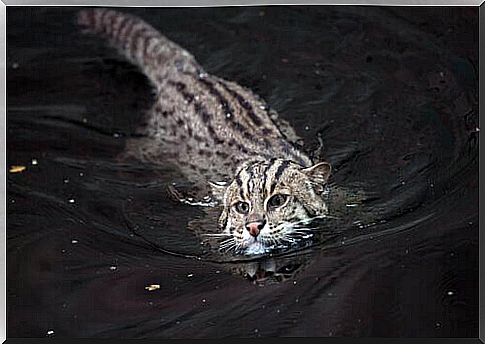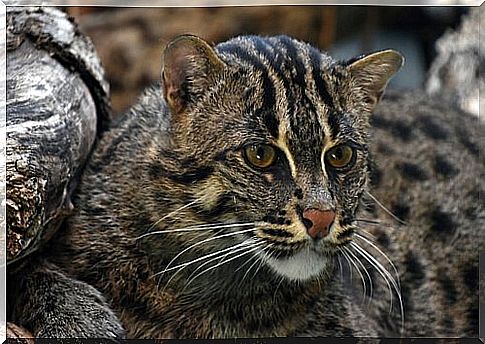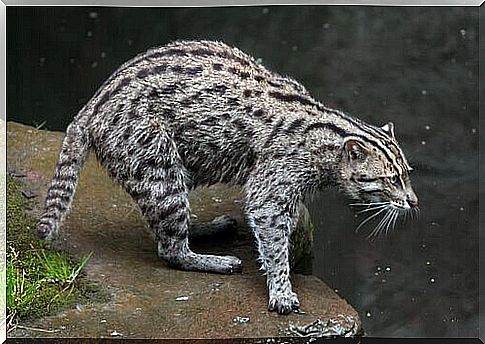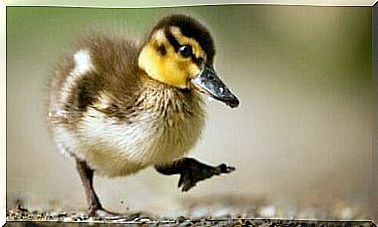Fishing Cat, A Feline In Danger Of Extinction

To dispel the myth that felines do not like water, in this article we will talk about the fishing cat. As the name suggests, this animal feeds mainly on fish. Also known as the viverrino cat, it lives in Asia (in the south and south-east of the continent) and is in danger of extinction, mainly due to the destruction of its habitat.
You have most likely never heard of this beautiful feline and we are sure that, simply by looking at the initial photo, you were amazed to see this fishing cat swimming peacefully. Are you ready to get to know him better?
Geographical distribution of the fishing cat
This little feline can be found in several areas of India, but mainly in the north-east of this country. It also lives in the foothills of the Himalayas – in Nepal – and in the Indus valley of Pakistan. Other places where he lives are:
- Bangladesh
- Sri Lanka
- Sumatra and Java (islands belonging to Indonesia)
- Bhutan
- Malaysia
- Thailand
- Vietnam
- Cambodia
- Myanmar
- China
It usually prefers to settle near wetlands : swamps, shallow lakes, rivers and places where mangroves grow, usually up to an altitude of 1,500 meters.

Physical characteristics of the fishing cat
Some attribute to its paws the ability to have developed a great ability to swim and dive. However, the membrane it has between its toes is no more developed than other felines.
Other physical characteristics of Prionailurus viverrinus are :
- Weight: between 6 and 16 kilograms.
- Size: measures between 66 and 86cm between head and body (females are smaller).
- Body: long and robust.
- Legs: relatively short.
- Tail: thick and short, about 30 centimeters.
- Head: wide.
- Muzzle: elongated.
- Coat: has a double layer of olive gray color. It shows dark streaks along the neck and face and brown spots along the body. In addition, a kind of rings are appreciated on the tail.
Feeding and reproduction of the viverrino cat
It has solitary and mainly nocturnal habits. In addition to hunting its prey, with its paws, sitting on the edge of lakes and rivers, the fishing cat dives into the water and swims to grab fish and other food.
Its diet is very rich and can include many different animals. Such as:
- Frogs
- Crustaceans
- Snakes
- Birds
- Rodents
On the other hand, it is estimated that, like domestic cats, Prionailurus viverrinus has the ability to reproduce throughout the year. In any case, the highest number of births, at least in northeastern India, is observed from March to May.
The gestation period lasts approximately 63 days and one to four puppies are given birth. They are nursed by their mother for a year and a half. Four months later, the young viverrine cats become completely independent.

An endangered feline
With a life expectancy of 12 years, the fishing cat is at risk of extinction despite the fact that in many countries where it lives it is an animal protected by national legislation.
It appears in the red list of the IUCN ( International Union for the Conservation of Nature ) as a vulnerable species and also in the appendix II of the CITES ( Convention on International Trade in Endangered Species ). A lot of permissions are needed to be able to export it internationally.
The fishing cat is at risk of extinction for three main causes:
- Destruction of its habitat (the wetlands have been invaded by human settlements, especially due to the reclamation carried out in order to favor agriculture).
- Poaching (feeding, selling fur, etc.)
- Destructive and indiscriminate fishing, which drastically reduces its main food sources.









